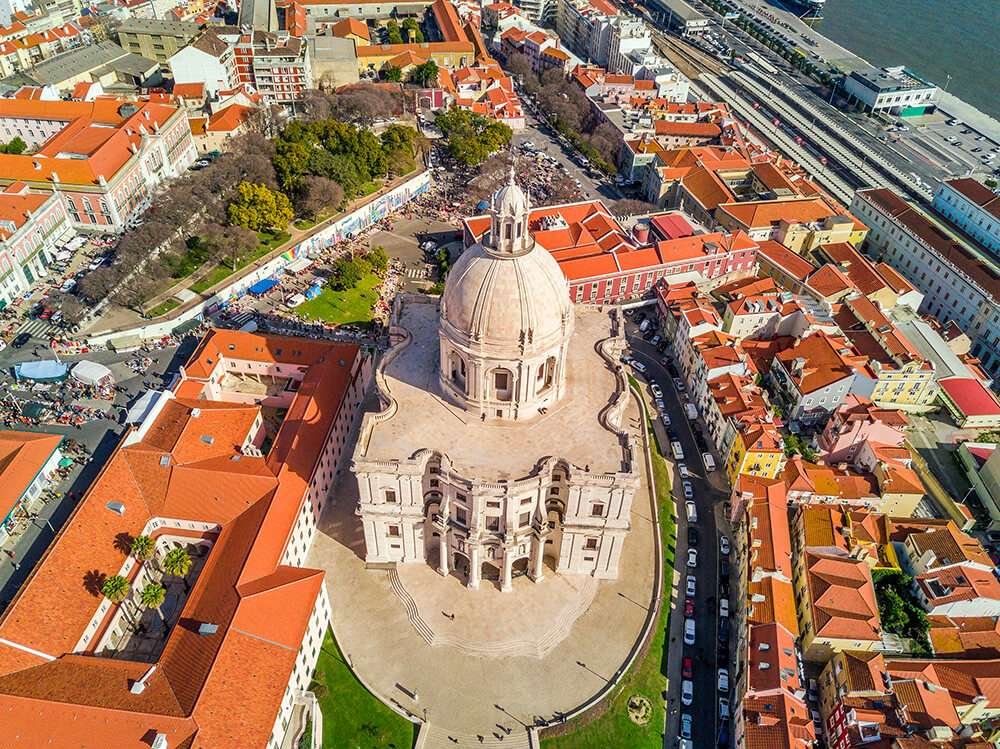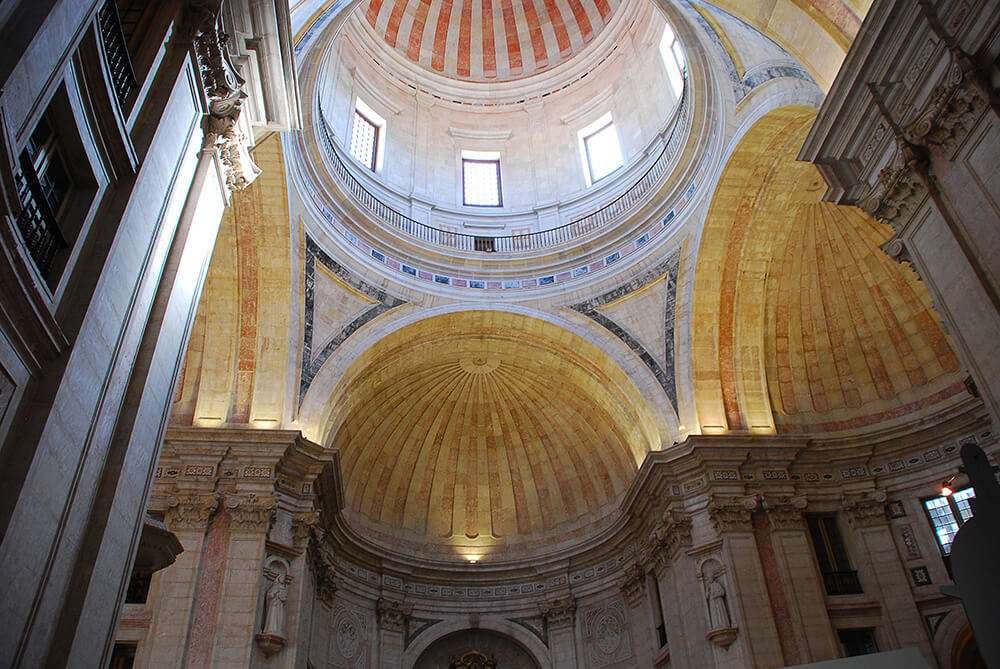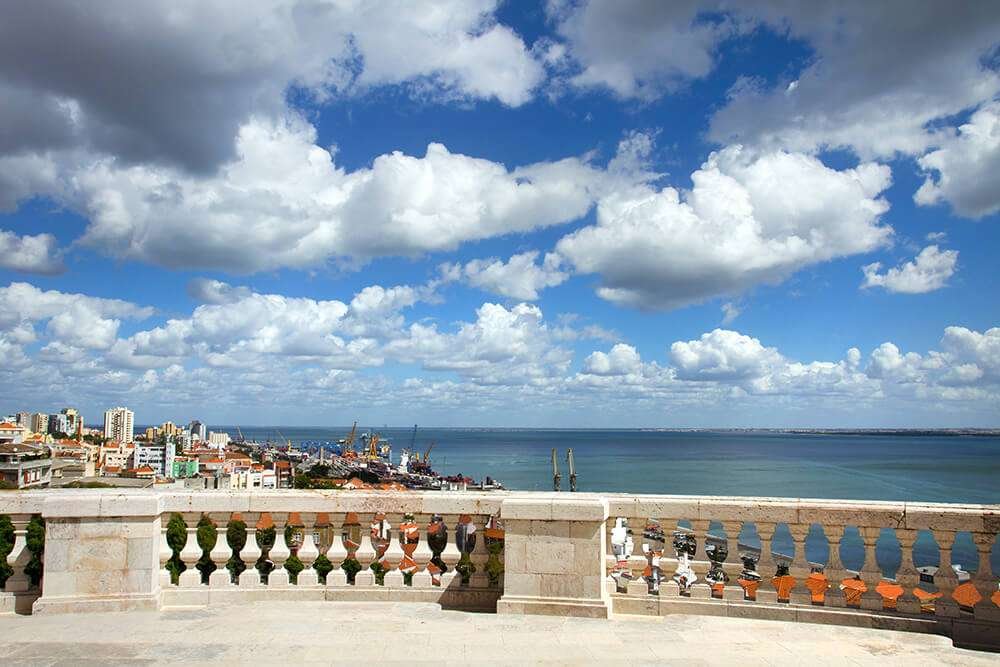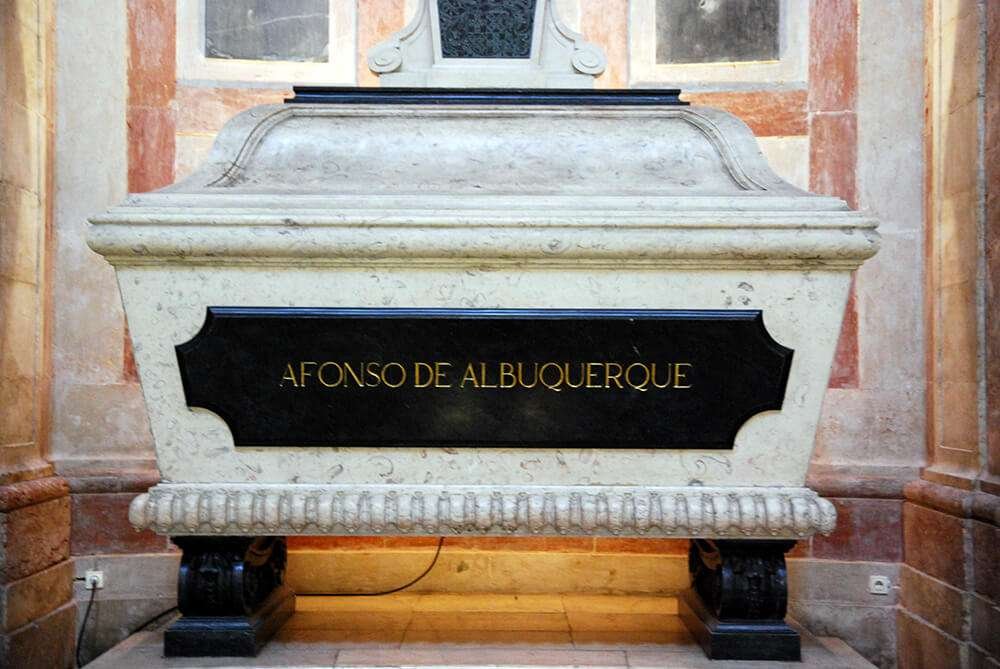With its white dome rising above its neighbors, the beautiful National Pantheon of Santa Engracia is an icon of Lisbon's skyline.
Listed as a national monument, the former 17th century church of Santa Engracia Panteão is a real Baroque pearl and houses the tombs of many important Portuguese figures.
The monument, which took 400 years to build, is said to have defied a curse that predicted the building would never be completed.
Read all about the intriguing history, the top things to do, prices, opening hours and more in this guide to the National Pantheon.
Let’s start!
Things to do at National Pantheon
Located on the original site of the Church of Santa Engrácia in Alfama, the National Pantheon is visible from many viewpoints of the city.
This emblematic monument of Lisbon is rich in historical and architectural treasures, making it one of the city's top tourist attractions.
See below some of the top things to do:

1. Marvel at the exceptional Architecture
Given its remarkable baroque project, unique in Portugal, it is worth taking a closer look at the architecture of the majestic white building, characterized by its unusual proportions and design, which shows similarities to St. Peter's Basilica in Rome.
The former church is very unusual in that, unlike many other cathedrals in the city, it was built in a Greek cross plan rather than a Latin cross plan. Eye-catching is the impressive 20th century dome that stands 80 meters above the ground, as well as the four square towers on each side.
Before entering through the large Baroque portico topped by the coat of arms of Portugal and two angels, pay attention to the three archways, each guarded by a sculpture of a saint.
- Check out the top churches and monasteries in Lisbon during your trip and don't miss a thing!

2. Admire the Interior
Although the harmonious interior design is rather minimalist, you can discover quite a few impressive elements, in particular the symmetrically patterned decorations and the multicolored marble variations that adorn the floors and the undulating walls.
Other notable features are the masterful sculptures, Greek symbols and traditional Islamic decorations, which are unique in Portugal.
- Did you know that Alfama was once the district of the Moors? Join a self-guided audio tour of Alfama from YourMobileGuide and discover the history and stories behind this centuries old neighborhood.
Take a look at the lavishly decorated central nave with the beautiful high altar and the splendid 18th-century baroque organ that was brought from the Lisbon Cathedral.

3. Climb the higher Levels
The best way to admire the magnificent artwork of the floors and their beautiful coloring is by climbing to the top balconies.
On the higher levels of the Pantheon, you will find small wooden balconies. Each of them will reward you with a wide-ranging view of the hall below, as well as the colored marble stonework floors with their fascinating symmetrical patterns. This view certainly makes for fantastic pictures.
→ Not far from the National Pantheon are two of the best viewpoints in Lisbon! Don't miss these popular instagram hotspots when you visit the city!

4. See the Tomb Rooms & Cenotaphs
Honoring the life and work of Portuguese heroes, the National Pantheon serves as the final resting place of the country’s most distinguished cultural and political personages.
Among the people that are laid to rest here are former presidents, prominent writers, the legendary soccer player Eusébio da Silva Ferreira, the fado diva Amália Rodrigues and General Humberto Delgado, an opposition leader assassinated by the secret police in 1962.
They are located in the three tomb rooms in the corner of the building.
Do not confuse these tombs with the tombstones you can see in the central nave. They are cenotaphs, empty tombs placed in honor of Vasco da Gama, Nuno Álvares Pereira, Infant D. Henrique, Afonso de Albuquerque, Pedro Álvares Cabral and Luís de Camões, who were buried elsewhere.
5. Visit the Interpretation Center
Visitors interested in the turbulent history of this site are recommended to visit the Interpretation Center. Here you can see a film about the different stages of construction as well as exhibits excavated from the former church, jewelry used in the inauguration ceremony of the National Pantheon, and various plaster models of the building.
6. Head to the Rooftop Terrace
With its privileged location, the National Pantheon makes for an excellent vantage point. The landmark overlooks the historic center of the city and the Tagus River. No wonder that the 40-meter-high terrace is one of the highlights of the monument.
Head up to the 4th floor and step out onto the huge terrace, where you can enjoy the incredible panoramic view over the Alfama neighborhood, the river and harbor. If the weather is nice, you can even see as far as the Vasco da Gama Bridge.
7. Events
The National Pantheon often hosts events of all kinds. These include concerts, exhibitions, poetry recitals, solemn acts, cultural activities and more.
Check the official website for an overview of current events. (only in Portuguese)
Tip: If you visit the National Pantheon on a Tuesday or Sunday and you like vintage & antique shopping, be sure to stop by the traditional Feira da Ladra flea market, which is held right next to the monument.
Entrance, Tickets, and Tours to National Pantheon
- Entrance: The National Pantheon is open from Tuesday to Sunday. From October to March, visiting hours are from 10am to 5pm (last admission at 4:40pm); from April to September, the opening hours are from 10am to 6pm (last admission at 5:40). The National Pantheon is closed on Mondays, January 1, Easter Sunday, May 1, June 13 as well as December 24 and 25.
- Tickets: The regular entrance fee to the National Pantheon is 4 €.
- Tours: Guided tours are available by appointment and held during the regular opening hours.
- Audioguide: Would you like to get to know the historic Alfama district and some of Lisbon's most famous tastes on your own? Then we recommend the self-guided tour "Taste of Alfama" by YourMobileGuide.
- Travelers' Tips: Entrance to the National Pantheon is free on the first Sunday of each month as well as for children up to 12 years of age, unemployed visitors residing in the European Union and visitors with reduced mobility and one companion. For further information, please check the official website (only in Portuguese).
How to Get to the National Pantheon?
From Praça do Comércio: The easiest way is to walk 4 minutes to the bus stop R. Madalena and take bus 10B. After 9 stops, you will reach the Panteão Nacional station, which stops in front of the National Pantheon.
Frequently Asked Questions about National Pantheon
The National Pantheon or Igreja de Santa Engrácia is located in the Alfama neighborhood.
From Praça do Comércio, walk 4 minutes to the bus stop R. Madalena and take bus 10B. After 9 stops you will reach the Panteão Nacional station, which stops in front of the National Pantheon.
From other areas of Lisbon, you can also easily get there by tram 28E (exit at Cç. S. Vicente).
The ticket price for the National Pantheon is 4€.

Historical Facts & Info about the National Pantheon
As we mentioned at the beginning, the National Pantheon or Igreja de Santa Engrácia has a tumultuous history. Although the current building dates from the 17th century, there was a predecessor church on this site dedicated to Santa Engrácia, a martyr of the city of Braga, commissioned by Princess Mary of Portugal.
After the destruction of this church in 1630, the Jew Simon Solis was falsely accused and sentenced to death by burning at the stake by the Inquisition. According to legend, Simon cast the infamous curse, predicting that the building would never be completed because an innocent man had been condemned. After a collapse and other failed attempts, reconstruction of the church began in 1681 under the direction of the royal architect João Antunes. However, after the architect's death in 1712, the construction work was stopped again, as King John V lost interest in the project.
The church remained unfinished into the 20th century, leading to the expression "Obras de Santa Engrácia" (like the construction of Santa Engrácia) becoming a Portuguese euphemism for unfinished work.
In the 1960s, the roofless Church of Igreja de Santa Engrácia, which was never used as a place of worship, was declared a National Pantheon. In 1966, construction was finally completed.
Contact & Map
- Address: Panteão Nacional/ Igreja de Santa Engrácia, Campo de Santa Clara 1100-471 Lisboa
- Opening Hours: From Tuesday to Sunday, 10am to 5pm (October to March); 10am to 6pm (April to September)
- Public Transport: By Tram 28E and exit at Cç. S. Vicente
- Official Website: Panteaonacional.gov.pt/ (in Portuguese only)

